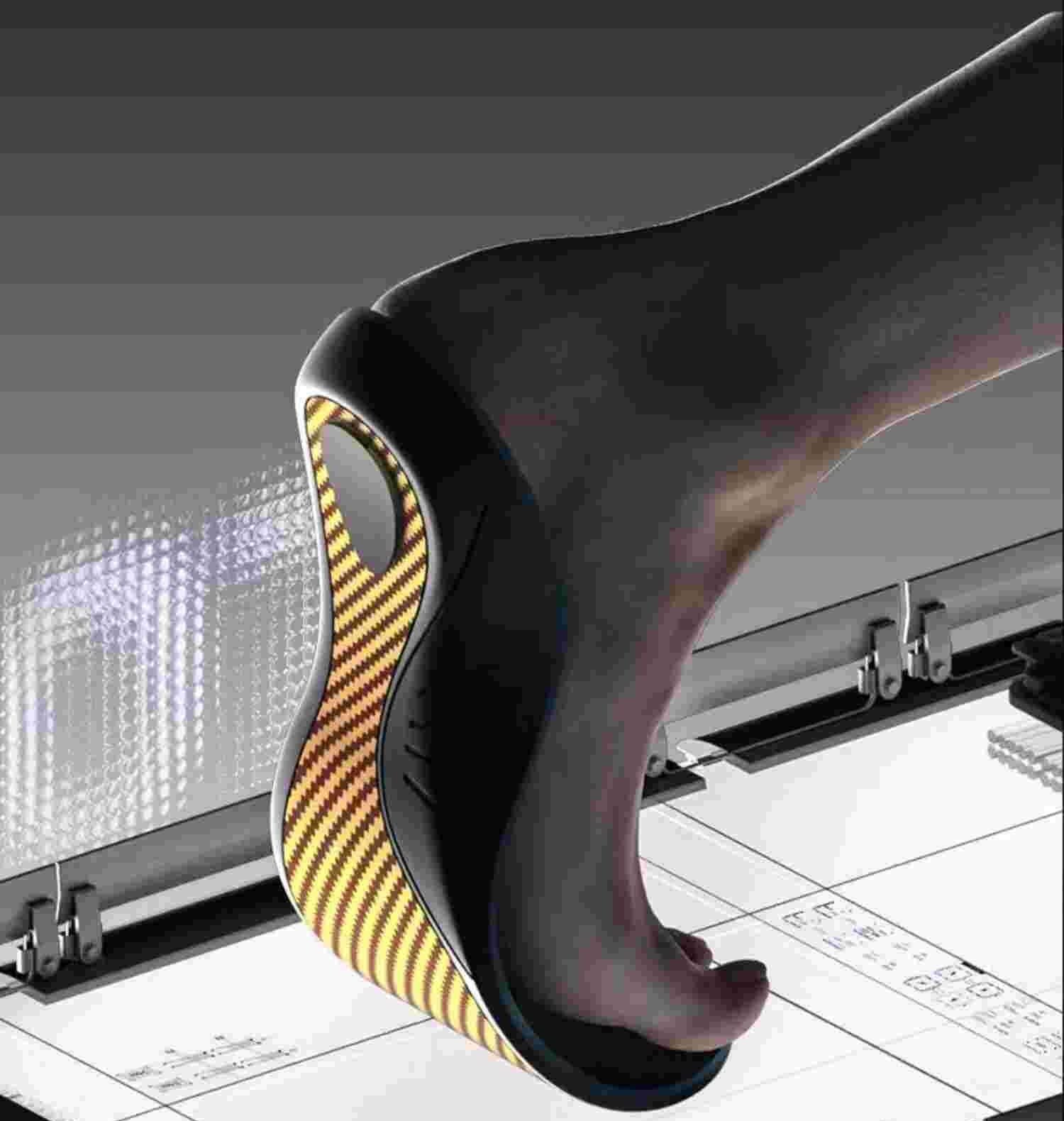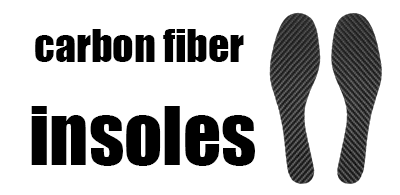In the ever-evolving world of running gear, one innovation has quietly but powerfully transformed how athletes think about foot support: carbon fiber insoles. Originally popularized in elite running shoes with carbon plates, carbon fiber has made its way into insoles that are not only high-performance but also surprisingly versatile.
From injury prevention to enhanced performance, runners are now making the switch to carbon fiber insoles for a variety of science-backed reasons. In this article, we’ll explore the biomechanics behind carbon fiber insoles, their unique benefits, and how to choose the best carbon fiber insoles for runners.

1. What Are Carbon Fiber Insoles?
Carbon fiber insoles are ultra-thin, rigid shoe inserts made from carbon fiber composite material. Known for being incredibly lightweight yet remarkably strong, carbon fiber provides unmatched support and energy return compared to traditional foam, gel, or PU-based insoles.
They are commonly used in sports that demand speed, endurance, and impact resistance—especially running. Unlike soft insoles designed purely for comfort, carbon fiber insoles for running are engineered to stabilize the foot, reduce energy loss, and promote better biomechanics.
2. The Biomechanics of Running and Foot Fatigue
Running places intense stress on the feet, ankles, and lower limbs. During every step, the foot experiences impact forces up to three times your body weight. If the arch collapses or the foot overpronates (rolls inward), it can lead to inefficiencies and even injuries like plantar fasciitis, stress fractures, and shin splints.
That’s where carbon fiber insoles step in. Their stiffness acts like a lever, preventing the foot from excessive flexion and maintaining optimal alignment. This translates into less muscle fatigue and a more efficient transfer of energy during the gait cycle.
3. Benefits of Carbon Fiber Insoles for Runners
Let’s break down the key benefits of carbon fiber insoles—especially for runners.
a. Energy Return and Efficiency
Carbon fiber insoles store mechanical energy during foot strike and release it during toe-off. This spring-like effect improves propulsion and running economy. A study from the Journal of Sports Sciences suggests that rigid carbon fiber plates can reduce the oxygen cost of running by improving stride efficiency.
b. Injury Prevention
Because of their rigidity, carbon fiber insoles limit excessive foot motion, which is often linked to overuse injuries. Runners with conditions like metatarsalgia, plantar fasciitis, or turf toe may benefit from the offloading effect of carbon fiber’s stiffness.
c. Arch and Heel Support
Unlike soft insoles that flatten over time, carbon fiber insoles provide consistent support to the arch and heel, promoting better posture and alignment throughout long runs or races.
d. Durability
Carbon fiber is virtually indestructible under normal running conditions. While foam insoles often need to be replaced after 200–300 miles, a good pair of carbon fiber insoles can last up to 1,000 miles or more.
4. Carbon Fiber Insoles vs. Traditional Running Insoles
| Feature | Traditional Insoles | Carbon Fiber Insoles |
|---|---|---|
| Material | Foam, Gel, PU | Carbon Fiber Composite |
| Flexibility | High | Low (Rigid) |
| Energy Return | Low to Medium | High |
| Lifespan | 200–300 miles | 800–1000+ miles |
| Support | Soft, Cushioned | Firm, Structured |
| Best For | Comfort, Minor Foot Pain | Performance, Injury Prevention |
Traditional insoles prioritize comfort but often compress and lose effectiveness quickly. Carbon fiber insoles are designed for performance-minded runners who value responsiveness, durability, and foot protection.
5. Use Cases: Who Should Consider Carbon Fiber Insoles?
-
Competitive runners looking for marginal gains in performance.
-
Marathon and half-marathon athletes trying to reduce fatigue.
-
Runners recovering from foot injuries like plantar fasciitis or toe fractures.
-
Trail and long-distance runners needing stability and durability.
6. How to Choose the Best Carbon Fiber Insoles for Runners
If you’re ready to try carbon fiber insoles, here are some tips for selecting the right pair:
✔️ Full-Length vs. ¾-Length
Full-length insoles provide better arch and heel control, while ¾-length options are more flexible for different shoe types.
✔️ Flex Point and Stiffness
Some insoles have variable stiffness zones. Choose one that supports your gait but doesn’t feel too harsh underfoot.
✔️ Compatibility With Shoes
Ensure your running shoes have enough volume to accommodate the carbon fiber insole without causing tightness.
✔️ Medical Needs
If you have a diagnosed condition like hallux rigidus or metatarsal pain, look for models with rocker bottom effects or forefoot protection.
✔️ Custom vs. Off-the-Shelf
While custom orthotics can be tailored to your foot, many off-the-shelf carbon fiber insoles offer excellent support at a fraction of the price.
7. Real Runner Experiences: Why They Switched
Many runners report feeling more spring in their step and less soreness after long runs when using carbon fiber insoles. Here are some common testimonials:
“I used to get arch pain after every 10K. With carbon fiber insoles, the pain is gone—and I’m running faster.”
— Ashley R., Boston, MA
“I’ve shaved 20 seconds off my mile pace since switching to carbon fiber insoles. They make me feel like I’m bouncing forward.”
— Greg T., Austin, TX
“These insoles gave me the support I needed during marathon training without weighing me down.”
— Emily D., San Diego, CA
8. Potential Downsides and Considerations
Carbon fiber insoles may not be ideal for everyone. Here are some caveats:
-
They can feel stiff or uncomfortable during the break-in period.
-
They’re generally more expensive than traditional insoles.
-
They may not be suited for individuals who prefer cushion-heavy footwear.
If you’re a beginner runner or someone who prioritizes softness underfoot, you might want to transition gradually or use them for specific training sessions.
9. Conclusion: Should You Make the Switch?
If you’re serious about running, performance, or injury prevention, carbon fiber insoles may be the game-changing upgrade you need. The science shows they help maintain foot alignment, return energy more efficiently, and last far longer than traditional insoles.
Whether you’re training for your next marathon, recovering from an injury, or simply looking to improve your stride, carbon fiber insoles offer a smart, science-backed solution for runners who want more from every step.
